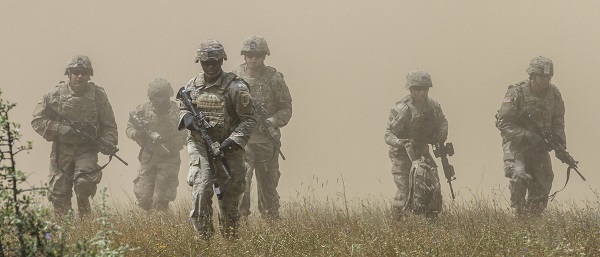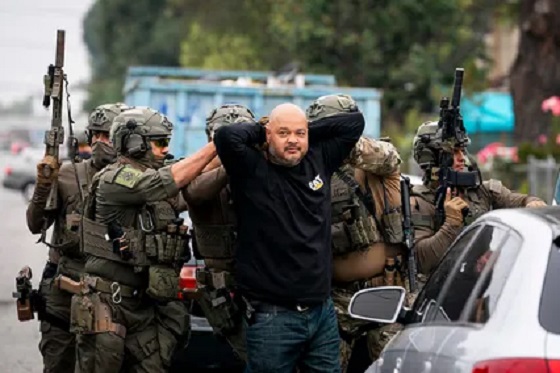MAiD
Skiing down euthanasia’s slippery slope

From the Macdonald Laurier Institute
By John Keown
Canada is on track to surpass the Netherlands.
When the Canadian Parliament legalized voluntary euthanasia (VE) and physician-assisted suicide (PAS) in 2016, at the behest of the Supreme Court, supporters of legalization doubtless hoped the new law and its operation would prove something of a poster child for the compassionate and controlled medical ending of life. Its critics, however, might now describe it as less like a poster child and more like the picture of Dorian Gray.
Whether the law should permit VE and PAS is one of the most important questions of social policy in developed countries. Here we will eschew the tendentious and misleading euphemisms “assisted dying” and “medical assistance in dying.” The law and professional medical ethics have always allowed doctors and nurses to “help people to die” by palliating symptoms, even if so doing foreseeably shortens life. What the new law permits is radically different: the intentional killing of patients and intentionally assisting them to kill themselves.
Moreover, the euthanasia law does not require that patients be “dying” or “terminally ill” in order (to employ further euphemisms) to be given the “medication” for such “treatment.” Policy makers should not disguise, or be complicit in disguising, the foundational nature of this moral, legal, medical, and social paradigm shift.
The Canadian experience with VE and PAS is of major relevance to the international debate. Does it support the assurances of legalization campaigners that these practices can be effectively controlled by the law and provide a “last resort” in the sort of “hard cases” involving patients who are (or who fear) dying in severe pain or discomfort – patients who are so regularly paraded before us by the mass media?
Or does it support the counter-argument that the appropriate answer to such pain and discomfort is the wider availability of quality palliative care, and that a relaxed law would not only fail to prevent mistake or abuse but would also prove a first step on a precipitous “slippery slope” to VE and PAS in an ever-widening range of cases?
The best body of evidence concerning the effects of legalization comes from the Netherlands, whose experience I have studied for 35 years.
The Dutch Supreme Court declared VE and PAS lawful in 1984. To justify this change, the Dutch invoked the doctor’s duty to relieve suffering, and the focus of discussion was the physical suffering of the dying. However, in 1994 the same court held that the requirement of “unbearable suffering” could be satisfied by an illness that was neither terminal nor even physical and was solely mental. (Whether the patient’s suffering was “unbearable” remains very largely a subjective matter decided by the patient.)
In 2016 the Dutch government proposed a further legal extension: to elderly folk with a “completed” life. And, if some patients still do not manage to meet the lax legal criteria for VE and PAS their doctors can, and do, advise them that there is the option of being medically palliated while they dehydrate themselves to death.
Lethal injections have even been extended to patients who are incapable of making a request. In 1996 the Dutch courts declared it lawful intentionally to kill disabled infants, such as those with spina bifida. And only last year, the government announced that euthanasia would be allowed for children between one and 12. In short, over the past 40 years the Dutch have clearly tumbled down euthanasia’s slippery slope. Their Belgian neighbours, who followed them in 2002 (the same year that Dutch legislation enshrining the pre-existing legal criteria came into force) are also on the skids.
Why does this happen? There are two explanations, one empirical, the other logical. The empirical explanation is that relaxed laws cannot effectively control VE and PAS in practice because the challenges of formulating, drafting, and enforcing proper safeguards are intractable. Common media references to “strict safeguards” in places like the Netherlands and Canada reflect journalistic ignorance rather than social reality.
The second explanation is logical. VE and PAS are, campaigners tell us, justified by (i) respect for patient autonomy and (ii) by the duty to relieve suffering. But if one buys their argument, euthanasia is also justified for competent patients who are suffering from chronic, not merely terminal, illness, and whether their suffering is physical or mental. Suffering is suffering, whether from terminal cancer or chronic arthritis or depression. Indeed, suffering from chronic illness, physical or mental, may last a lifetime, not merely a few weeks or months. And why exclude the perduring existential suffering that tragically blights the lives of so many lonely, elderly folk?
Why, moreover, exclude euthanasia for suffering patients such as infants who are incapable of requesting death (non-voluntary euthanasia or NVE)? The absence of patient autonomy does not cancel the doctor’s duty of beneficence.
The Dutch have, then, proved nothing if not logical, and it is surely only a matter of time until their law is formally extended to embrace the elderly who are “tired of life.”
And so, to Canada. It leaped onto the slope as a result of the Supreme Court’s ruling in Carter v. Canada in 2015, in which the court overruled its previous decision in Rodriguez v. British Columbia in 1993. Rodriguez was soundly reasoned, and its reasoning remains in line with the rejection of a right to VE and PAS by the highest courts in other common law jurisdictions including the United States, the United Kingdom, and Ireland. By contrast (as I explain in Euthanasia, Ethics and Public Policy), Carter may strike some as reading more like rationalization than reasoning and as an exercise in judicial activism that stains Canadian jurisprudence.
Here we will mention just one of its flaws: its endorsement of the crucial finding of the trial judge that the evidence from jurisdictions with VE and/or PAS showed that the risks of legalization can be very largely avoided by carefully designed, well-monitored safeguards. This finding bristled with problems, not least of which was that no jurisdiction had (or has) carefully designed, well-monitored safeguards.
In a subsequent and similar case in Ireland, three senior judges carefully reviewed the judgment of the trial judge in Carter. They unanimously rejected her finding, not least in view of the (undisputed) evidence from the Netherlands and Belgium of the striking extent of medical euthanasia without any explicit request from the patient.
I was called as an expert witness in Carter by the Attorney General of Canada. At the end of my day-long cross-examination in Vancouver by the late Joseph Arvay, Q.C., counsel for those challenging the law against VE and PAS, the judge asked me to reprise both the practical and logical slippery slope arguments that I have outlined above. I did so, using the evidence from the Netherlands, Belgium, and Oregon to demonstrate the lack of effective legal control, and the Dutch endorsement of infanticide to illustrate the logical slippery slope. (Indeed, the two leading ethics experts called by Mr Arvay had endorsed both voluntary and non-voluntary euthanasia in their published work.)
The judge nevertheless concluded that the evidence showed that VE and PAS could safely be legalized. As for the logical argument, she dismissed it as involving “speculation” and because the legal challenge was only to the legal prohibition as it affected competent patients! Her failure to join the dots was noteworthy. (My 2022 paper in the Cambridge Law Journal confirms the real, not speculative, nature of the logical argument.) The Supreme Court endorsed the judge’s several errors. It did so, moreover, without even the fig leaf of a single dissenting judgment.
And what have we (all too predictably) witnessed since 2016, when legislation accommodated the Supreme Court’s ruling? Even leaving aside the steep yearly increases in the number of medical killings, we have seen that the statutory requirement that the patient’s death be “reasonably foreseeable” need no longer be met; that euthanasia where the sole cause of suffering is mental illness has been approved (though its implementation has been delayed until 2027 to allow preparations to be made), and that further expansion of the law to include “mature” minors, and requests for euthanasia written in advance of incompetence, is on the cards. Not to mention the several reported cases involving vulnerable patients that raise unsettling questions about the operation of the law.
In 1994 a distinguished House of Lords Select Committee on Medical Ethics unanimously concluded that English law should not permit VE or PAS. The committee observed that the criminal law’s prohibition on intentional killing was the “cornerstone of law and of social relationships” that “protects each one of us impartially, embodying the belief that all are equal.”
The experience in Canada uncomfortably confirms what happens once a society abandons that historic, bright-line prohibition in favour of the competing and arbitrary notion that whereas some people have lives that are “worth living,” others would be “better off dead” and it is right to grant their request to be killed or to help them kill themselves.
It is surely only a matter of time until calls are made for the “benefit” of a hastened death to be conferred on people who are incapable of requesting it. Why “discriminate” against people who are suffering with, say, advanced dementia merely because they are incapable of requesting a lethal injection? Why deny them their rights under the Canadian Charter of Rights and Freedoms? The enormous cost savings will lurk supportively behind the argument, like a gangster’s heavy.
In the Netherlands, euthanasia has been normalized to a significant degree. Far from being an exceptional practice in “hard cases” of “last resort,” it has come to be regarded largely as another healthcare option. Canada appears to be following suit. Professor Trudo Lemmens, the eminent Canadian health lawyer, has noted the “troubling normalization” of euthanasia in Canada where, he adds, “rights rhetoric” surrounding the issue has replaced evidence-based debate.
Thankfully, the concerning developments in Canada are now being ventilated in the public domain: in the media, both in Canada and abroad; in journals of law, medicine and bioethics, and by the UN rapporteur on the rights of people with disabilities. It is telling that in the UK even campaigners for legalization are straining to distance themselves from the Canadian precedent.
In 40 years, the Dutch have slid down the slippery slope. In fewer than 10, Canada appears to be veritably skiing.
John Keown DCL (Oxon) is the Rose F. Kennedy Professor of Christian Ethics in the Kennedy Institute of Ethics at Georgetown University in Washington, DC. He previously taught medical law at the University of Cambridge. The second edition of his book Euthanasia, Ethics and Public Policy: An Argument Against Legalisation, described as “magisterial” by Lord Judge, the former Lord Chief Justice of England and Wales, was published by Cambridge University Press in 2018.
International
Trump admin wants to help Canadian woman rethink euthanasia, Glenn Beck says

From LifeSiteNews
Jolene Van Alstine, approved for state-sanctioned euthanasia after enduring long wait times to receive care for a rare parathyroid disease, is in need of a passport to enter the U.S.
Well-known American media personality Glenn Beck says he has been in touch with the U.S. State Department to help a Canadian woman in Saskatchewan reconsider euthanasia after she sought assisted suicide due to long medical wait times to address her health problems.
As reported by LifeSiteNews on Tuesday, Canadian woman Jolene Van Alstine was approved to die by state-sanctioned euthanasia because she has had to endure long wait times to get what she considers to be proper care for a rare parathyroid disease.
Van Alstine’s condition, normocalcemic primary hyperparathyroidism (nPHPT), causes her to experience vomiting, nausea, and bone pain.
Her cause caught the attention of Beck and many other prominent Americans and Canadians on X.
In an update today on X, Beck said, “Jolene does not have a passport to gain legal entry into the U.S., but my team has been in touch with President (Donald) Trump’s State Department.”
“All I can say for now is they are aware of the urgent life-saving need, and we had a very positive call,” he added.
Beck had said before that he was in “contact with Jolene and her husband” and that he had “surgeons who emailed us standing by to help her.”
As of press time, neither the State Department nor other officials have not yet confirmed Beck’s claim that he has been in touch with them.
As a result of Van Alstine’s frustrations with the healthcare system, she applied for Canada’s Medical Assistance in Dying (MAiD) and was approved for January 7.
As reported by LifeSiteNews, over 23,000 Canadians have died while on wait lists for medical care as Prime Minister Mark Carney’s Liberal government is focused on euthanasia expansions.
A new Euthanasia Prevention Coalition report revealed that Canada has euthanized 90,000 people since 2016, the year it was legalized.
As reported by LifeSiteNews recently, a Conservative MP’s private member’s bill that, if passed, would ban euthanasia for people with mental illness received the full support of the Euthanasia Prevention Coalition.
Health
US podcaster Glenn Beck extends a lifeline to a Saskatchewan woman waiting for MAiD

From LifeSiteNews
Jolene Van Alstine was approved for euthanasia after tiring of waiting years for surgery in Canada
A Canadian woman is looking to die by state-sanctioned euthanasia because she has had to endure long wait times to get what she considers to be proper care for a rare parathyroid disease.
The woman is Jolene Van Alstine, whose condition, normocalcemic primary hyperparathyroidism (nPHPT), causes her to experience vomiting, nausea, and bone pain.
As noted in a recent CBC report, Van Alstine claims she is not able to get proper surgery to remove her parathyroid in her home province of Saskatchewan, as there are no surgeons in that province who can perform that type of surgery.
She has said her “friends have stopped visiting me” and she is “isolated” and living “alone lying on the couch for eight years, sick and curled up in a ball, pushing for the day to end.”
“I go to bed at six at night because I can’t stand to be awake anymore,” she said.
As a result of her frustrations with the healthcare system, Van Alstine applied for Canada’s Medical Assistance in Dying (MAiD). She was approved for the procedure on January 7, 2026.
Saskatchewan Health Minister Jeremy Cockrill met with Van Alstine last month to try to see if he could help her, but what they talked about remains confidential.
“The Government of Saskatchewan expresses its sincere sympathy for all patients who are suffering with a difficult health diagnosis,” the government said.
As reported by LifeSiteNews, over 23,000 Canadians have died while on wait lists for medical care as Prime Minister Mark Carney’s Liberal government is focused on euthanasia expansions.
A new Euthanasia Prevention Coalition report revealed that Canada has euthanized 90,000 people since 2016, the year it was legalized.
Americans offering Jolene surgery help now say they have made contact with her
Van Alstine’s story has gone viral on the social media platform X, catching the attention of well-known American personalities, some who have claimed they can help her.
“If there is any surgeon in America who can do this, I’ll pay for this patient to come down here for treatment,” Glenn Beck wrote Tuesday on X.
“THIS is the reality of ‘compassionate’ progressive healthcare. Canada must END this insanity and Americans can NEVER let it spread here.”
According to Beck in a subsequent X post, he has had “surgeons who emailed us standing by to help her.”
“We are in contact with Jolene and her husband! Please continue to pray for her health,” he wrote on X.
“Will update more soon.”
As reported by LifeSiteNews recently, a Conservative MP’s private member’s bill that, if passed, would ban euthanasia for people with mental illness received the full support of the Euthanasia Prevention Coalition.
Lobby groups have pushed for MAiD to be expanded to minors.
Desiring to expand the procedure to even more Canadians, former Prime Minister Justin Trudeau’s government sought to expand from just the chronically and terminally ill to those suffering solely from mental illness. The current Liberal government appears to want to continue with the MAiD regime.
However, in February, after pushback from pro-life, medical, and mental health groups as well as most of Canada’s provinces, the federal government delayed the mental illness expansion until 2027.
-

 Crime9 hours ago
Crime9 hours agoTerror in Australia: 12 killed after gunmen open fire on Hanukkah celebration
-

 Energy2 days ago
Energy2 days agoCanada’s future prosperity runs through the northwest coast
-

 Crime9 hours ago
Crime9 hours agoHero bystander disarms shooter in Australian terror attack
-

 Business16 hours ago
Business16 hours agoInflation Reduction Act, Green New Deal Causing America’s Energy Crisis
-

 Business1 day ago
Business1 day agoFuelled by federalism—America’s economically freest states come out on top
-

 Daily Caller1 day ago
Daily Caller1 day ago‘There Will Be Very Serious Retaliation’: Two American Servicemen, Interpreter Killed In Syrian Attack
-

 illegal immigration1 day ago
illegal immigration1 day agoUS Notes 2.5 million illegals out and counting
-

 Automotive1 day ago
Automotive1 day agoPoliticians should be honest about environmental pros and cons of electric vehicles




